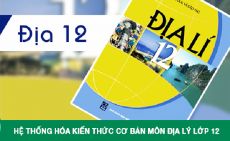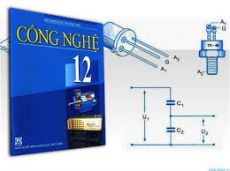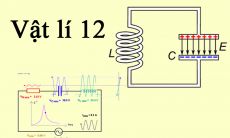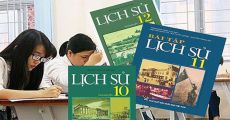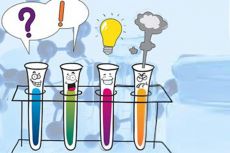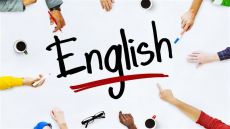Đề thi thử THPT QG năm 2021 môn Tiếng Anh
Trường THPT Kim Liên
-
Câu 1:
Indicate the word that differs from the other three in the position of primary stress: verbal, signal, common, attract
A. verbal
B. signal
C. common
D. attract
-
Câu 2:
Indicate the word that differs from the other three in the position of primary stress: academic, inorganic, understanding, uncertainty
A. academic
B. inorganic
C. understanding
D. uncertainty
-
Câu 3:
Indicate the word whose underlined part differs from the other three in pronunciation: busy, answer, person, basic
A. busy
B. answer
C. person
D. basic
-
Câu 4:
Indicate the word whose underlined part differs from the other three in pronunciation: laughed, sacrificed, cooked, explained
A. laughed
B. sacrificed
C. cooked
D. explained
-
Mark the letter A, B, C, or D on your answer sheet to indicate the most suitable response to complete each of the following exchanges.
Câu 5:
- David: “Do you fancy going to a movie this evening?”
- Lisa: “ ___________ ”
A. I’m sorry. I don’t know that.
B. Not at all. Go ahead.
C. Not so bad. And you?
D. That would be nice.
-
Câu 6:
- John : “What kind of job would you like?
- Tim : “___________”.
A. No, thanks
B. I heard it was very good
C. Anything to do with computers
D. Anytime after next week
-
Mark the letter A, B, C, or D on your answer sheet to indicate the word(s) OPPOSITE in meaning to the underlined word(s) in each of the following questions.
Câu 7:
It was necessary to divide the movie “Roots” into five parts in order to show it on television.
A. adapt
B. merge
C. segment
D. transact
-
Câu 8:
With the final examinations coming very soon his anxiety was rising to almost unbearable limits.
A. joy
B. confidence
C. boredom
D. apprehension
-
Mark the letter A, B, C, or D on your answer sheet to indicate the word(s) CLOSEST in meaning to the underlined word(s) in each of the following questions.
Câu 9:
It was relatively easy for him to learn baseball because he had been a cricket player.
A. approximately
B. comparatively
C. nearly
D. essentially
-
Câu 10:
You have to be on your toes if you want to beat her.
A. pay all your attention to what you are doing
B. upset her in what she is doing
C. get involved in what she is doing
D. make her comply with your order
-
Mark the letter A, B, C, or D on your answer sheet to indicate the correct answer to each of the following questions.
Câu 11:
Since he failed his exam, he had to ____for it again
A. pass
B. make
C. take
D. sit
-
Câu 12:
Is there _____at all I can help?
A. everything
B. anything
C. something
D. one thing
-
Câu 13:
Don’t worry. He’ll do the job as __as possible
A. economizing
B. economic
C. economical
D. economically
-
Câu 14:
They tell me about the film ____on TV last week
A. when they watched
B. which they watched it
C. which they watched
D. whom they watched
-
Câu 15:
It’s important to know about how developed countries have solved the urbanization problems and ____some solutions to those in Viet Nam.
A. think
B. advise
C. expect
D. propose
-
Câu 16:
Tim’s encouraging words gave me ____to undertake the task once again.
A. a point
B. an incentive
C. a resolution
D. a target
-
Câu 17:
I don’t suppose there is anyone there, ________?
A. do I
B. isn’t there
C. is there
D. don’t I
-
Câu 18:
He wanted to know whose car I had borrowed _________
A. the last evening
B. last night
C. yesterday evening
D. the previous night
-
Câu 19:
Are you taking _______ this semester?
A. house economics
B. home economic
C. house economic
D. home economics
-
Câu 20:
We should participate in the movements ____the natural environment.
A. organizing to conserve
B. organized to conserve
C. organized conserving
D. which organize to conserve
-
Câu 21:
He does not ____his fellow-workers and there are often disagreements between them.
A. get on with
B. put up with
C. go on with
D. take to
-
Câu 22:
Many applicants find a job interview _______ if they are not well-prepared for it.
A. impressive
B. stressful
C. threatening
D. time-consuming
-
Read the following passage and mark the letter A, B, C, or D on your answer sheet to indicate the correct word or phrase that best fits each of the numbered blanks from 23 to 27
The warming of the Earth is caused by exhaust gas from automobile engines, factories and power (23) ________. Carbon dioxide goes up into the atmosphere, and it form a kind of screen that keeps or allows the sunshine in but stop the Earth heat (24) _______ getting out. It works like a greenhouse, that’s why we call (25) ________ the Green House effect.
Because of this effect, the Earth is getting warmer alt the time. This (26) ________ in temperature will cause big changes to the world’s climate. The sea level will increase as the ice (27) _______ the poles will melt.
Câu 23:
(23)........................
A. companies
B. factories
C. sites
D. stations
-
Câu 24:
(24)...................
A. from
B. up
C. against
D. away
-
Câu 25:
(25).....................
A. is
B. be
C. it
D. them
-
Câu 26:
(26).....................
A. raise
B. rise
C. drop
D. fall
-
Câu 27:
(27).....................
A. covering
B. covers
C. covered
D. cover
-
Read the following passage and mark the letter A, B, C, or D on your answer sheet to indicate the correct answer to each of the questions from 28 to 34
The Hindu culture celebrates marriage as a pure and pristine rite enabling two individuals start their journey of life together. It puts emphasis on the values of happiness, harmony and growth and could be traced back from the Vedic times.
Months before the wedding ceremony, an engagement is held which is called “magni”. The couple is blessed here with gifts, jewelry and clothes. Another important ritual is the “mehendi” which is a paste made from the leaves of henna plant. It is the traditional art of adorning the hands and the feet of the bride with mehendi and the name of the groom is also hidden in the design.
On the day of marriage, the couple exchanges garlands as a gesture of acceptance of one another and a pledge to respect one another as partners which is known as «jaimala». This is followed by «jaimala», where the father of the bride places her hand in the groom’s hand requesting him to accept her as an equal partner.
Another ritual is the «havan» in which the couple invokes Agni, the god of Fire, to witness their commitment to each other. Crushed sandalwood, herbs, sugar rice and oil are offered to the ceremonial fire. The “gath bandhan” takes place where scarves of the bride and groom are tied together symbolizing their eternal bond. This signifies their pledge before God to love each other and remain loyal. The couple then takes four “mangal pheras” or walk around the ceremonial fire, representing four goals in life: “Dharma”, religious and moral duties; “Artha”, prosperity; “Kama” earthly pleasures; “Moksha”, spiritual salvation.
The couple also takes seven steps together to begin their journey, called the “saptapardi”. Then the ritual of “sindoor” takes place where the groom applies a small dot of vermilion, a red powder to the bride’s forehead and welcomes her as his partner for life. This signifies the completion of the marriage. The parents of the bride and the groom then give their blessings, “ashirwad” to the newly wed couple as they touch the feet of their parents.
Câu 28:
What might be the most suitable title for this reading passage?
A. The Hindu culture
B. The Hindu religion
C. The Hindu wedding
D. The Hindu tradition
-
Câu 29:
What does the word “magni” stand for?
A. the wedding
B. the paste made from the leave of one another
C. the engagement
D. the gesture of acceptance oi one another
-
Câu 30:
What do the Hindu people think about marriage?
A. It is entirely a spiritual traditional ritual allowing two individuals to live together
B. It is a belief in the growth of a family newly formed by two individuals
C. It is a wish of happiness and harmony to come to two individuals
D. It is just a living-together announcement of two individuals
-
Câu 31:
What can the word "adorning" be best replaced by?
A. decorating
B. painting
C. repairing
D. dying
-
Câu 32:
What can the word "invokes" be best replaced by?
A. tells
B. says
C. prays
D. talks
-
Câu 33:
Why does the couple exchange garlands?
A. to do a ritual
B. to show both their acceptance of and the swear to respect the partner
C. to express their acceptance of one another and a wish of happiness
D. to express their vow to respect each other for the whole life
-
Câu 34:
When is the wedding ceremony completed?
A. When the parents of the bride and the groom give their blessings to the couple
B. When the couple touches their parents’ feet
C. When the couple makes seven steps together
D. When the groom applies a small dot of vermillion of the brides forehead
-
Read the following passage and mark the letter A, B, C, or D on your answer sheet to indicate the correct answer to each of the questions from 35 to 42
It is hard to think of a world without gas or electricity. Both are commonly used for lighting and heating today. We now can instantly flick a lighter or strike a match to make a flame. But it was not long ago that there were no such things as matches or lighters. To make fire, it was necessary to strike a piece of iron on flint for sparks to ignite some tinder. If the tinder was damp, or the flint old, you had to borrow some fire from a neighbor.
We do not know exactly when or how people first used fire. Perhaps, many ages ago, they found that sticks would burn if they were dropped into some hole where melted lava from a volcano lay boiling. They brought the lighted sticks back to make their fire in a cave. Or, they may have seen trees catch fire through being struck by lightning, and used the trees to start their own fires.
Gradually people learned they could start a fire without traveling far to find flames. They rubbed two pieces of wood together. This method was used for thousands of years. When people became used to making fires with which to cook food and stay warm at night, they found that certain resins or gums from trees burnt longer and brighter. They melted resins and dipped branches in the liquid to make torches that lit their homes at night.
Iron stands in which torches used to be fixed can still be seen in old buildings of Europe. There was no lighting in city streets until gas lamps, and then electric lamps were installed. Boys ran about London at night carrying torches of burning material. They were called torch boys, or link boys, and earned a living by guiding visitors to friends’ houses at night.
For centuries homes were lit by candles until oil was found. Even then, oil lamps were no more effective than a cluster of candles. We read about the splendors and marvels of ancient palaces and castles, but we forget that they must have been gloomy and murky places at night.
Câu 35:
What does “they” refer to?
A. people
B. ages
C. sticks
D. trees
-
Câu 36:
According to the passage the first fire used by people was probably obtained _______.
A. from the suns heat through glass
B. by rubbing wood together
C. from heat or fire caused by nature
D. by striking iron against flint
-
Câu 37:
It is stated in the passage that torches for lighting were made from ______.
A. the wood of gum trees
B. iron bars dipped in melted resins
C. wooden poles dipped in oil
D. tree branches dipped in melted resins
-
Câu 38:
It is mentioned in the passage that before the electric lamp was invented, ________.
A. oil lamps and then candles were used
B. candles and oil lamps appeared about the same time
C. candles and then oil lamps were used
D. people did not use any form of lighting in their houses
-
Câu 39:
The word “splendors” in the passage could be best replaced by which of the following?
A. expensive object
B. places of scenic beauty
C. achievements
D. the beautiful and impressive features
-
Câu 40:
According to the passage, which of the following sentence is NOT true?
A. We know exactly when and how people first used fire
B. Before gas lamps and electric lamps appeared, streets were lit by torches
C. We can make a fire by striking a piece of iron on flint to ignite some tinder
D. Matches and lighters were invented not long ago
-
Câu 41:
The word “gloomy” in the passage is closest in meaning to ________.
A. nearly dark
B. badly decorated
C. containing a lot of white
D. mysterious
-
Câu 42:
What form of street lighting was used in London when link boys used to work there?
A. Gas lighting
B. No lighting at all
C. Electric lighting
D. Oil lighting
-
Mark the letter A, B, C, or D on your answer sheet to indicate the sentence that is closest in meaning to each of the following questions.
Câu 43:
It is possible that the fire in the ship was started by a bomb.
A. They say that a bomb started the fire in the ship
B. The fire in the ship might have been started by a bomb
C. It shall be said the fire in the ship had been started by a bomb
D. The fire in the ship is known to have been started by a bomb
-
Câu 44:
Nick always forgets his wife’s birthday.
A. At no time Nick remembers his wife's birthday.
B. Nick never remembers his wife’s birthday.
C. Nick sometimes remembers his wife's birthday.
D. Nick remembers his wife’s birthday all the time.
-
Câu 45:
If you practise harder, you will have better results.
A. The harder you practise, the best results you will have.
B. The more hardly you practise, the better results you will have.
C. The hardest you practise, the most results you will have.
D. The harder you practise, the better results you will have.
-
Mark the letter A, B, C, or D on your answer sheet to indicate the underlined part that needs correction in each of the following questions.
Câu 46:
(A) The shopkeeper warned the boys (B) don’t lean (C) their bicycles (D) against his windows.
A. The
B. don’t
C. their
D. against
-
Câu 47:
(A) The people who (B) they hadn't seen the weather forecast (C) were caught (D) unaware by the hurricane
A. The
B. they
C. were
D. unaware
-
Câu 48:
No longer (A) satisfied with the (B) emphasis ot the Denishawn school, Martha (C) has moved to (D) the staff of the Eastman school in 1925
A. satisfied
B. emphasis
C. has
D. the staff of
-
Mark the letter A, B, C, or D on your answer sheet to indicate the sentence that best combines each pair of sentences in the following questions
Câu 49:
Linda lives in a house. The house is opposite my house.
A. Linda lives in a house where is opposite my house.
B. Linda lives in a house which is opposite my house.
C. Linda lives in a house who is opposite my house.
D. Linda lives in a house and which is opposite my house.
-
Câu 50:
He turned the radio on at 7.30. He was still listening to it when his mother came home at 9.00
A. He has been listening to the radio at 7.30.
B. He had been listening to the radio since 7.30.
C. He has been listening to the radio after 7.30.
D. He had been listening to the radio by 7.30.





